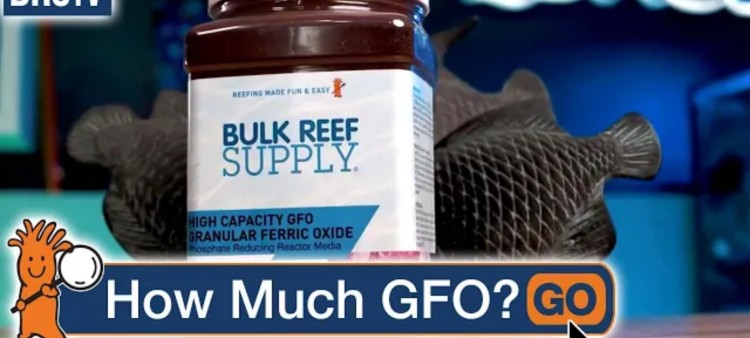How much GFO does a reef tank need?
- Jul 12, 2022
- Anshika Mishra
- 998 0 0

The answer to this question is a little bit loaded because it implies that you need GFO, aka Granular Ferric Oxide, for a reef tank to be successful, which isn't true.
GFO can be an excellent reef-keeping tool, but not everyone needs to use it. So, when would you need to use GFO. First, look at what GFO is used for.
What is GFO?
GFO is a chemical media that is fantastic at removing excess phosphate from the water. So, if your aquarium happens to have high phosphate, GFO can be a good solution.
Symptoms of excess phosphate can be excess algae growth, browned-out or dull-looking corals, and even stunted coral growth in the case of hard corals like Acropora.
The only way to know for sure is by testing your aquarium water with a phosphate test kit.
So, let's assume you have tested and found your phosphate is above the recommended range of 0.04 to 0.06 ppm. Now you know your phosphate is higher than you like them to be, and you will take action to reduce them in the form of GFO since it is safe, affordable, and easy to use.
Now, we can ask the big question how much GFO does your reef tank need?
How much GFO does a reef tank need?
How much GFO you need will depend on a few factors, including:
- the volume of your aquarium
- the type of GFO you are using
- total phosphate reduction
Note: It is essential not to reduce your phosphate too quickly. A massive swing in phosphate can be tough on corals, so a gradual reduction over time is always best. This is why you should always follow the directions for the exact type of GFO that you have.
Generally, there are two types of GFO: Standard and high capacity.
The main difference is that high-capacity GFO removes twice as much phosphate, meaning you can use half as much as standard GFO can get the same result. Therefore, it is most frequently used on extensive aquarium systems with a lot of water volume so that you can use less of it at a time that requires less space or smaller media reactors.
For most reefers, standard GFO works very well. With standard GFO, one tablespoon will safely treat four gallons of water. So, if you have a 100-gallon aquarium, you will start using 25 tablespoons of GFO.
Once you have given it a rinse and added it to your filtration either in a media bag or a small media reactor, you want to continue testing your phosphate daily to see how far your phosphate comes down in the first week.
When using GFO for the first time, the initial batch of media can exhaust quickly because of the elevated phosphate levels in your tank. By testing for phosphates, you can see if you can stop falling and start climbing again, which means it's time to swap up the GFO for a fresh batch.
After that first batch is shaped, the subsequent sets of GFO will last much longer. Typically in that four to the eight-week range. If you find that one tablespoon of GFO per four gallons of water isn't able to keep up and your phosphates aren't getting down to that range of 0.04 to 0.06, you can start using it at a higher ratio of up to two tablespoons of GFO for four gallons of water.
But, it is still best to increase that amount slowly. So, try 1.5 tablespoons and stop once you find that sweet spot for your aquarium's phosphate.
Here is the kicker, you don't have to use GFO to reduce phosphates. There are many ways to manage the nutrients in your reef tank. So, if swapping media doesn't sound like your cup of tea, maybe try something else.







About author